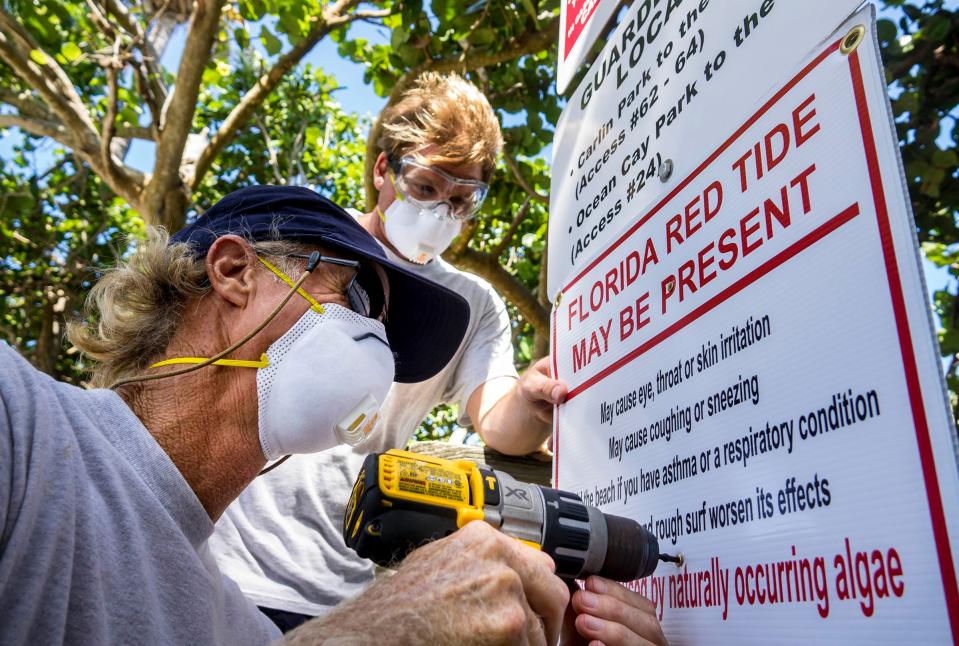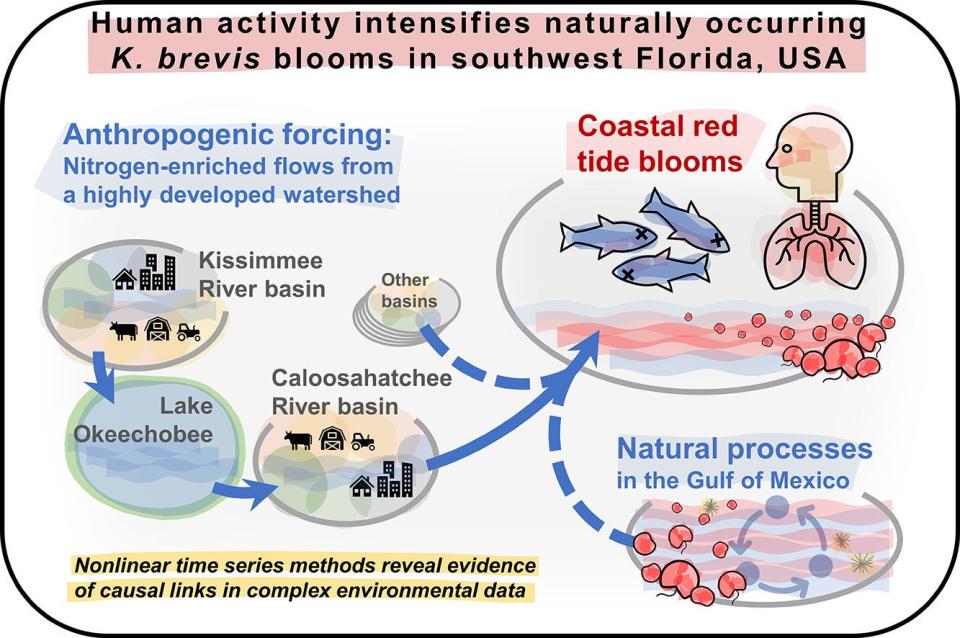Red tide impacting Florida beaches: 6 things you need to know about toxic algae
While a trace of red tide was measured in waters off Palm Beach County in February, it was fleeting and not necessarily a foreshadowing of a widespread bloom. But red tide is currently blanketing the Southwest Florida coast.
Levels from Tampa Bay south to Marco Island range from around 10,000 cells per liter to more than 1 million cells per liter, according to the Florida Fish and Wildlife Conservation Commission.
Fish kills and breathing issues in humans can start when levels reach 10,000 cells per liter, according to the FWC.
Fish kills have been problematic in Collier County waters in recent weeks.
Water taken from the Juno Beach Pier on Feb. 15 tested positive for background amounts of red tide.
The amount found at the pier was so miniscule it was not expected to have any detrimental health effects, and it was gone when a follow-up test was taken Feb. 22.
More:Scientists not concerned about red tide detected near West Palm Beach - yet
More:Red tide numbers strong as fish kills reported throughout Naples-Collier area
1. Is red tide harmful to humans?
When the toxin from red tide is inhaled, it can cause respiratory symptoms in people, such as coughing, wheezing and sore throats.
In marine life, it’s a killer that affects the nervous system and can cause paralysis.
2. What exactly is red tide?
It is a sea-faring toxic algae, formally known as the single-cell Karenia brevis.
It produces a toxin as a defense mechanism.
3. What is the main cause of red tide and how long does it last?

Red tides are naturally occurring. They have been observed in the Gulf of Mexico since the 1800s.
They can grow far offshore in the Gulf and pile up near the coast in the fall and winter as wind patterns blow cold fronts into Florida.
Red tide is often gone by spring, but in some years, the infection has lingered.
4. Is red tide present in Florida right now?
Yes. Samples on Florida's west coast from Venice to Naples tested at high levels of toxicity.
Fish kills have been problematic in Collier County waters in recent weeks. Rhonda Watkins, a pollution control environmental supervisor for Collier County, said reports of dead fish are widespread.
Medium levels have been found in the Florida Keys.
It’s possible a stronger dose of red tide could find its way to Florida's east coast beaches, according to James Sullivan, executive director of Florida Atlantic University's Harbor Branch Oceanographic Institute.
5. Red tide hit Florida beaches hard in 2018
A persistent red tide bloom lasted through the summer and into fall of 2018.
Tons of marine life died on the west coast of the state, triggering daily “fish kill clean-up” reports on Sanibel Island where dump trucks full of dead fish were removed.

Manatee, Goliath grouper, shorebirds and sea turtles all perished in droves that year in areas from Sarasota through Naples.
By late September 2018, the red tide had arrived in Palm Beach County.
“I wasn’t sure what it was,” Wes Price, a lifeguard of 30 years and a lieutenant with Palm Beach County Ocean Rescue, said Thursday about the throat scratchiness he felt with the red tide in 2018. “I had never experienced that before.”

6. Can red tide on Florida's west coast reach the state's east coast?
Yes. A west coast bloom can reach the east coast if it gets caught in the Gulf of Mexico's loop current and travels through the Florida Straits into the Gulf Stream — a north-moving river of warm water that skims the Palm Beach County coastline.
Once in the Gulf Stream, waves can force the toxin produced to be dispersed in the air, which can be carried by east winds to the beaches.
Since 1972 when the transport of red tide from the west coast to the east was first identified, seven more instances had been documented prior to 2018, according to the Florida Fish and Wildlife Conservation Commission. Those include in 1990, 1997, 1999 and 2006. In 2007, a red-tide bloom near Jacksonville traveled south with a near-shore current.
Kimberly Miller is a veteran journalist for The Palm Beach Post, part of the USA Today Network of Florida. She covers real estate and how growth affects South Florida's environment. Subscribe to The Dirt for a weekly real estate roundup. If you have news tips, please send them to kmiller@pbpost.com. Help support our local journalism, subscribe today.
This article originally appeared on Palm Beach Post: Is red tide harmful to humans? Here are 6 things you should know

